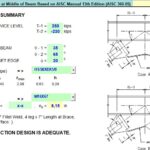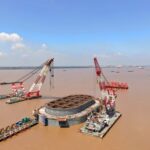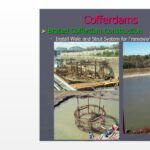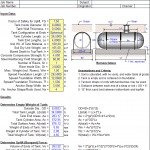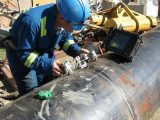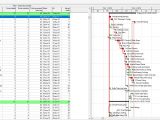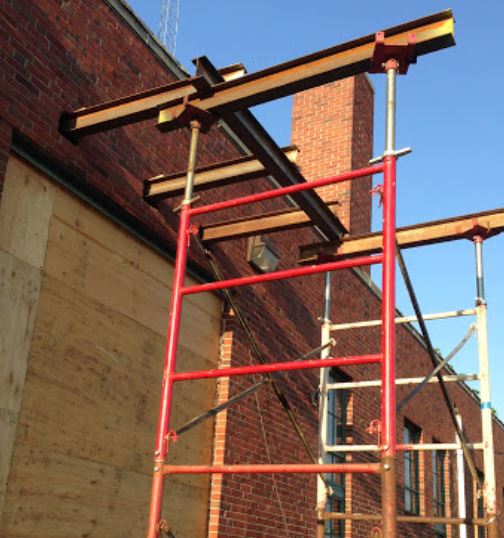
The different types of temporary structures
10 May 2020Table of Contents
The different types of temporary structures
During construction, temporary structures are required. Let us assume a simple task of painting a building. How could workers go up to the upper levels to paint? Typically, workers stand on a temporary structure known as a scaffold (Fig.1).
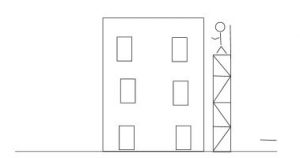
Fig.1. The painting of a building. A scaffold is built for painters to stand on while painting the building
1. SCAFFOLDS
Scaffolds are work platforms that enable workers to do their job at high elevations. The type of work can be brickwork, painting, steel work, concreting, or window installation. Most scaffolds are made of steel pipes. In some countries bamboo is stillused for scaffolds.
1.1 Pipe Scaffolds
Pipes are used to build scaffolds. Pipes are connected using special connectors. Platforms are provided for workers to stand on. Ladders are provided for workers to go from one platform to another one (Figs.2 and 3). Pipe scaffolds cannot be used for very tall buildings. Other methods such as outrigger scaffolds are used in such situations.

Fig.2. Pipe scaffold with one platform
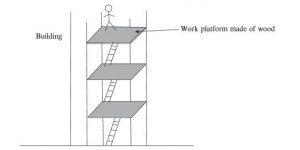
Fig.3. Pipe scaffold with multiple platforms. Ladders are provided to climb to higher platforms
1.2 Outrigger Scaffolds
Consider this scenario: Brickwork has to be done on the 70th story of a 70-story building. How could the workers get to the 70th story? Should they build a pipe scaffold from the ground all the way to the 70th story? That may not be very feasible. In this type of situation, outrigger scaffolds can be used. Metal beams are attached to the building. These beams are used to build a work platform (Fig.4).
In the case of outrigger scaffolds, metal beams or a metal structure are attached to the newly constructed building. This has to be done with the authorization of design engineers. This metal structure is known as outriggers. The protruding metal structure is used to build a work platform.
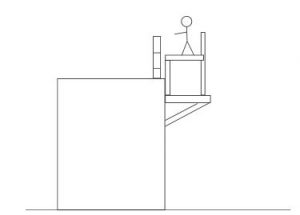
Fig.4. Outrigger scaffold
1.3 Modular Scaffolds
Pre-made modules are becoming common in many construction projects (Figs.5 and 6).
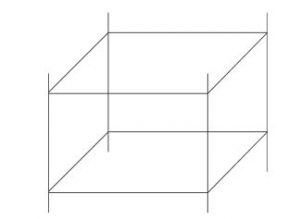
Fig.5. Scaffolding modules
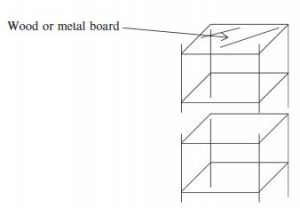
Fig.6. Scaffolding modules are fitted together to reach high elevations
Boards: Boards are made of metal or wooden planks attached to the scaffolding for people to stand and work. Uprights also known as standards and poles are used to carry the load to base. False uprights are mainly used near entrances to the work platform. False uprights do not transfer any vertical loads to the ground. Though it may provide lateral support handrails, it does not provide any lateral supports to the scaffold system.
2. SHORING
Scaffolds are built for workers to work. Scaffolds act as work platforms for workers. On the other hand, shoring is done to support wet concrete. Once the concrete is hardened, the shoring is removed. Other than supporting wet concrete, shoring can be used to support weak columns.Let us assume that an existing column in a building is deteriorated and has to be replaced. The procedure to remove an existing column and build a new column is shown in Fig.7.
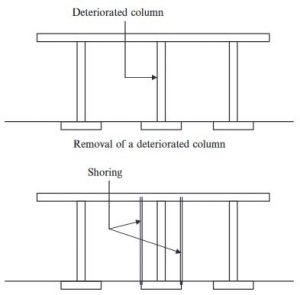
Fig.7. Provide shoring prior to removal of the column
Once proper shoring is provided and has been approved by the relevant authorities, the contractor can remove the existing load bearing column and construct a new one.
3. BRACING
Bracing is a support element provided to strengthen an existing structural element (Figs.8 and 9).
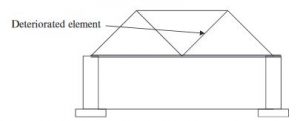
Fig.8. Deteriorated element in a structure
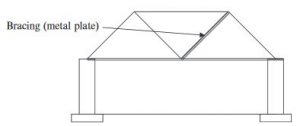
Fig.9. Bracing is provided for the deteriorated element
3.1 Bracing Masonry Walls
Masonry walls need to be braced during and after construction. All masonry walls have to be supported laterally. In a building, masonry walls are tied to beams, columns, and other walls.
Until the masonry wall is laterally supported, it has to be braced. In practice, bracing of masonry walls has to follow OSHA guidelines. For the exam purposes, NCEES recommends “Standard Practice for Bracing Masonry Walls Under Construction” by Mason Contractors Association of America (MCAA).
Hence, you need to know both OSHA and MCAA guidelines (Fig.10). Masonry walls are made of bricks and mortar. Until a mortar brick joint is fully developed, masonry walls have little lateral stability.
Even after the mortar is hardened, a standing masonry wall has little resistance against over-turning. As per OSHA, any wall 8 ft or taller needs to be braced.

Fig.10. Schematic diagram of a masonry wall bracing. Bracing is required tomaintain the lateral stability of a masonry wall
4. COFFERDAMS
There are instances where construction has to take place near a river, lake, or ocean. Bridge piers, harbor structures, and flood control structures are some examples. In such situations water has to be kept away from the construction area.
How can you concrete when water is pouring in? A structure has to be built to keep the water away. In such situations a temporary structure needs to be constructed to keep the water away. These temporary structures are known as cofferdams.
Cofferdams are temporary structures constructed to keep water out ofthe construction area. The majority of cofferdams are constructed in riversmainly to build bridge piers. Thanks to improvement in caisson technology, in most cases cofferdams may not be necessary anymore.

